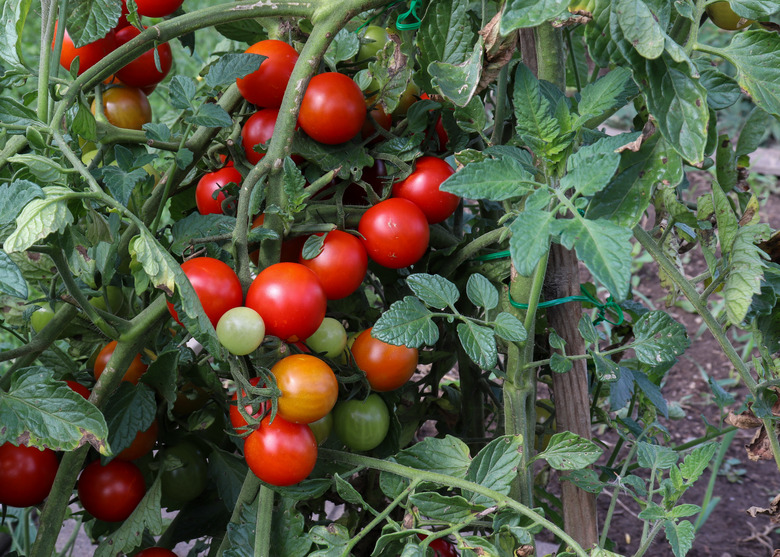Tomato Plant Identification
Whether you're roaming your garden, admiring a friend's or getting googly-eyed at a plant sale, it's nice to know exactly what variety of tomato you're looking at. With no marker to be found, how can you know whether it's determinate or indeterminate? Heirloom or hybrid? Cherry or beefsteak?
You may never completely solve the mystery of an unidentified tomato since there are literally thousands of cultivars available. However, you may be able to answer a few key questions with a close examination of the plant. It's even easier to tell what kind of tomato plant you have if it's already bearing fruit. Commonly grown as annuals, the tomato (Solanum lycopersicum, formerly Lycopersicon esculentum) is a perennial in USDA zones 10-11.
Indeterminate vs. Determinate Tomato Plants
Knowing whether you have indeterminate or determinate tomato plants can help you prepare a tall enough trellis or cage. It will also clue you in to when you can expect to start harvesting tomatoes and for how long. That's because determinate tomato plants produce fruits earlier than indeterminate varieties, but they also produce for a shorter period of time.
Overall size is an excellent indicator of whether a tomato plant is determinate or indeterminate. Indeterminate tomato plants will grow and produce as much as they possibly can, which means they can reach well beyond 6 feet tall and produce a staggering number of tomatoes until something — usually the first frost — kills the plant.
In contrast, determinate varieties stop growing once they reach about 4 feet, which makes them a better choice for container gardening. They'll also produce all of their fruits at the same time, and then they're done for the season.
Therefore, if you're looking at a tomato plant with fruits at different stages of ripening, it's probably indeterminate. Another visual clue to consider is whether the tomato plant looks short and bushy or like a vine. Indeterminate tomatoes get tall and scraggly, whereas determinate varieties have petioles and leaves packed closer together.
Varieties of Potato Leaf Tomatoes
A "potato leaf tomato" is more than a tongue-twister: It's a sure sign that you're looking at an heirloom tomato, not a hybrid. However, not all heirlooms have potato leaves.
Potato leaf tomatoes have leaves that resemble the foliage on potato plants, with not as many lobes or serrations as "regular leaf" tomatoes. A regular tomato leaf is also compound, separated into many small leaflets and compound leaflets. A tomato with so-called potato leaves will have much larger and fewer leaflets.
Types of Tomato Fruits
Just a quick glance at the tomato section of a grocery store reveals that this fruit comes in a variety of shapes, sizes and even colors. Some tomatoes are better suited for slicing onto sandwiches or salads, while others are preferred for cooking into sauces. What kind of recipes can you expect to enjoy with what's growing in your garden?
The only way to find out is to wait for a fruit to grow. Small, round fruits are cherry tomatoes, which are excellent for snacking or halving into salads. Small fruits with a more oblong shape are grape tomatoes, which stand up well to cooking.
A larger tomato with an oblong shape is the Roma tomato, which isn't very juicy and is best eaten raw or lightly cooked. The beefsteak tomato is what everyone tends to picture when they hear the word tomato, and it can be used for virtually anything: slicing, roasting, grilling, snacking and so on. Other varieties do exist, but these four represent the most common.
